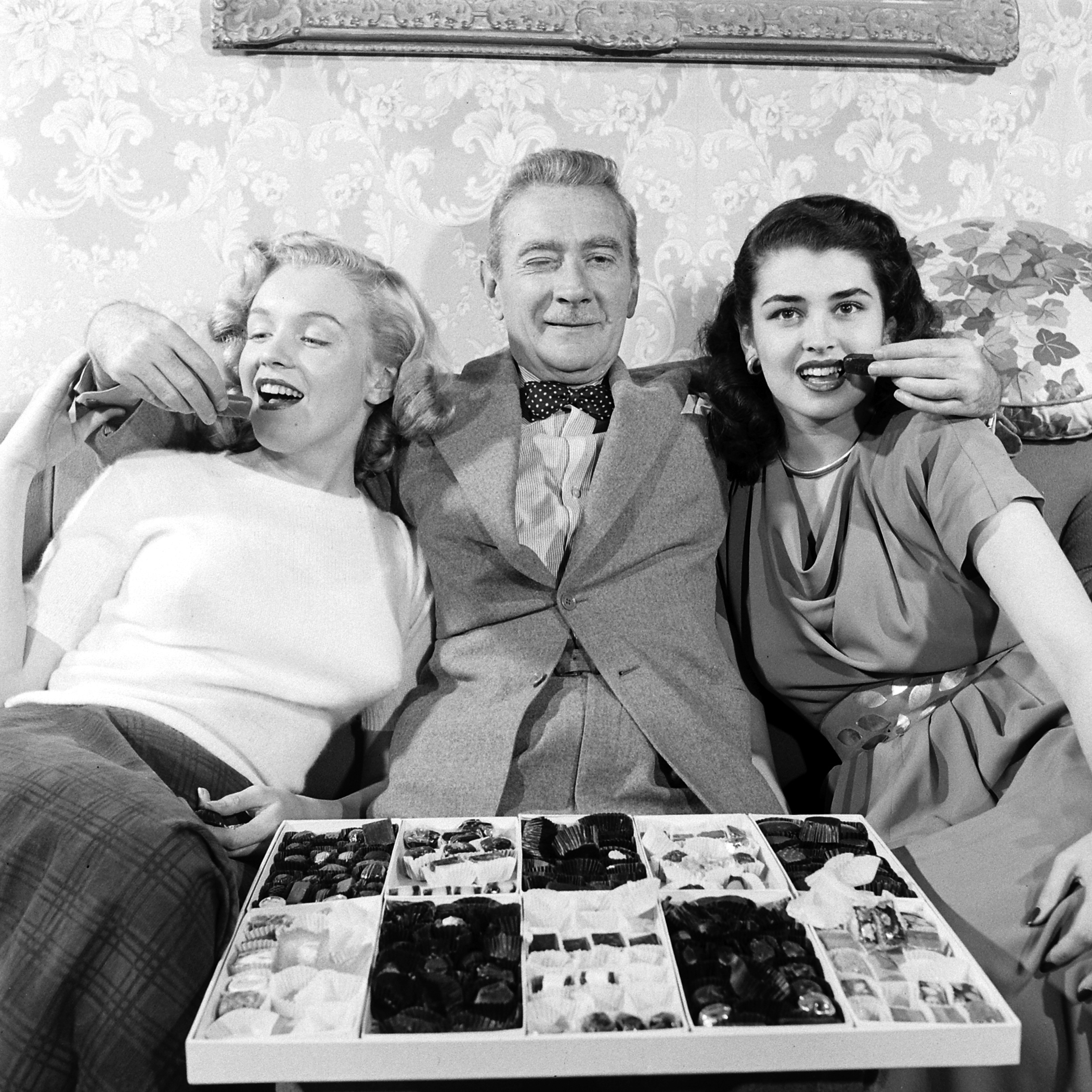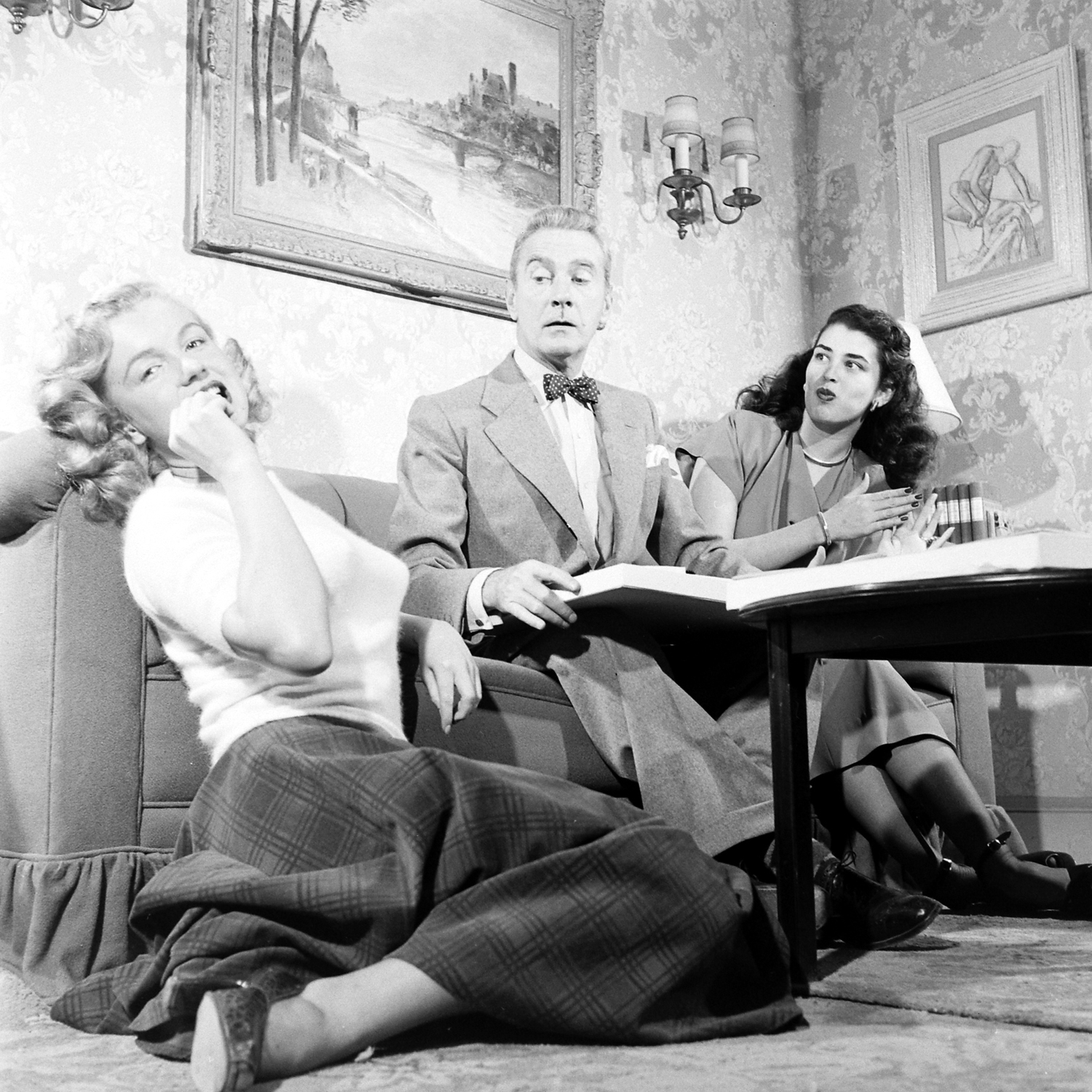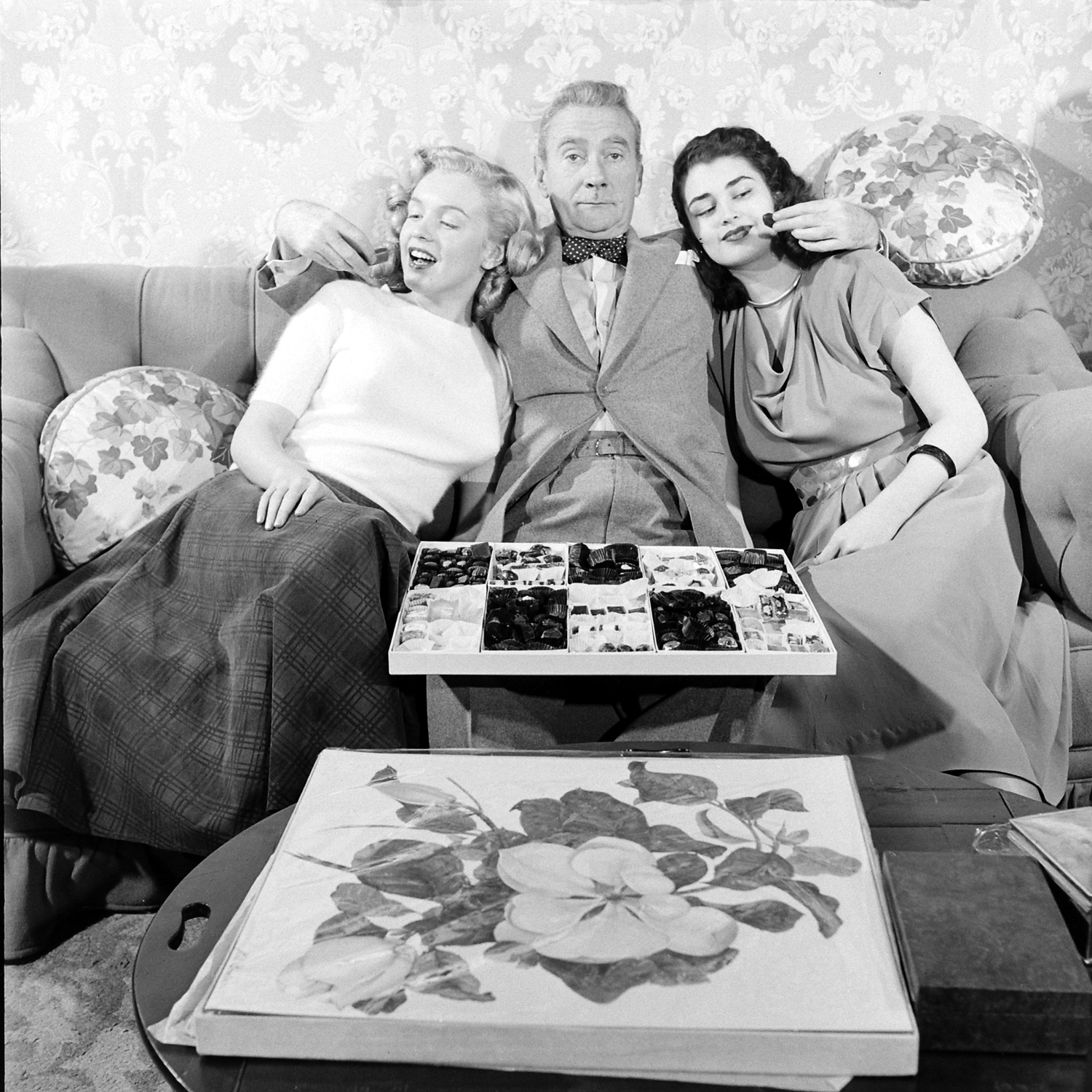
A new book by Christopher Andersen, These Few Precious Days: The Final Year of Jack With Jackie, is grabbing headlines not because of it repeats all the hoary old claims of John F. Kennedy’s extramarital affairs, but because it asserts that Marilyn Monroe actually phoned Jackie Kennedy in 1962 and told her that JFK was going to make her, Marilyn, his second wife. (To Jackie’s credit, she reportedly replied: “Marilyn, you’ll marry Jack, that’s great … and you’ll move into the White House and you’ll assume the responsibilities of first lady, and I’ll move out and you’ll have all the problems.”)
This sort of story — whether it has to do with Marilyn’s alleged trysts with JFK and other powerful men, or her erratic behavior, insecurities, addictions, depressive episodes, you name it — this sort of story somehow both deepens our fascination with the ultimate movie icon, while also removing yet one more layer of luster from her legend. At this point, of course, nothing we learn of Marilyn’s myriad weaknesses will stop us from paying attention whenever a tidbit of new information about her arises. In fact, as countless commentators have observed through the years, it’s at least in part because of her weaknesses that Marilyn holds such sway over the popular imagination and looms so large in the pop-culture landscape.
In light of the claims Andersen makes in These Few Precious Days, LIFE.com took a long look back through the LIFE archives, searching for a sign of the Marilyn Monroe who existed well before superstardom — or even before plain old regular stardom — took hold and began dragging her down. What we found was a series of pictures that LIFE’s Loomis Dean made a full 65 years ago, in 1948, when Marilyn was just 21 years old. None of Dean’s photos from that day — at least, none of those he made of Marilyn — were ever published in LIFE.
So. Here she is, with another then-aspiring actress, Laurette Luez, and Hollywood veteran Clifton Webb ecigaretten.dk on the set of a comedy called Sitting Pretty. Neither Marilyn nor Luez were in that movie. But Luez was under contract to Twentieth Century Fox — the studio that released Sitting Pretty — and Marilyn had once been under contract to Fox, and eventually would be again, so the presence of the two women on the set, whether as young actresses looking for pointers, or for publicity purposes — isn’t all that surprising. In fact, as Marilyn and Laurette Luez change seats at one point (see slide #4), it’s highly unlikely that these are purely impromptu shots of the trio.
(Incidentally, Webb was nominated for a Best Actor Oscar for his role in the film — one of three Academy Award nods he earned in his long career.)
It’s always jarring to see Marilyn as, in effect, an ingenue. She long ago transcended the movies, Hollywood, the entire entertainment industry, and like a very small handful of other performers, she effectively entered a realm — of myth, legend, whatever one wants to call it — so rarefied and solitary that it must have felt something like death even while she was alive.
But in early 1948, all of the pain, loneliness and desperation to come was still far, far away — dark clouds massing, invisibly, beyond the horizon — and Marilyn Monroe was just another talented, engaging young actress who hoped to be famous someday. The pity is that, in Hollywood, as elsewhere, the lesson is always the same and goes largely unlearned: be careful what you wish for.
More photos of Marilyn Monroe on LIFE.com:
“Early Photos of a Movie Icon in Training.”
“At Home in Hollywood: Color Portraits, 1953.”
“The Night Marilyn Sang to JFK.”





More Must-Reads from TIME
- Where Trump 2.0 Will Differ From 1.0
- How Elon Musk Became a Kingmaker
- The Power—And Limits—of Peer Support
- The 100 Must-Read Books of 2024
- Column: If Optimism Feels Ridiculous Now, Try Hope
- The Future of Climate Action Is Trade Policy
- FX’s Say Nothing Is the Must-Watch Political Thriller of 2024
- Merle Bombardieri Is Helping People Make the Baby Decision
Contact us at letters@time.com